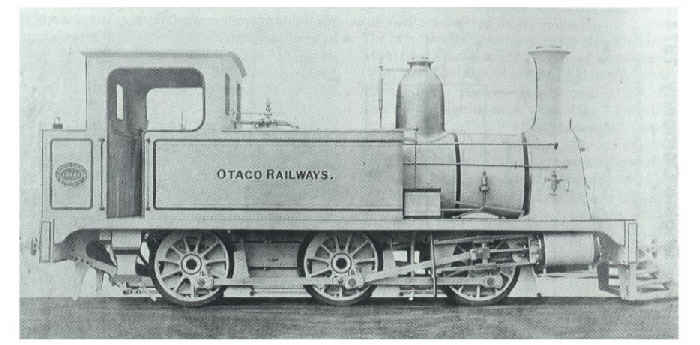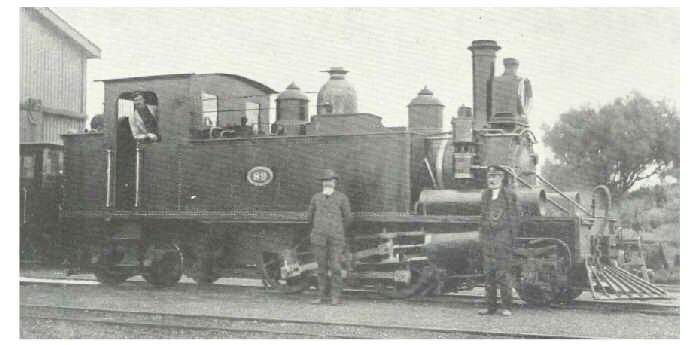Introduced: 1888
Number in Class: 4

M class as built 0-6-0 T

M class as rebuilt 2-4-4 T
Locomotive Specifications 0-6-0 T
|
2. Rebuilt by NZR Addington |
| Engine Weight: 27.7 tons |
Tender Weight: | Total Weight: 27.7 tons | Adhesive Weight: 27.7 tons |
| Length over Buffers: | Total Wheelbase: 12' 0" | Engine Wheelbase: 12' 0" | Coupled Wheelbase: 12' 0" |
| Tender Wheelbase: | Driver Wheel Dia.: 42" | Cylinders HP: Two - 13" x 20" |
Cylinders LP: |
| Grate Area: 8.6 sq ft | Evaporative Area: 583 sq ft |
Superheated Area: | Working Pressure: 130 psig |
| Tractive Effort: 8370 lbs f |
Coal Capacity: 1.35 tons | Oil Capacity: | Water Capacity: 600 gals |
Locomotive Specifications 2-4-4 T
| Engine Weight: 31.0 tons |
Tender Weight: | Total Weight: 31.0 tons | Adhesive Weight: 15.8 tons |
| Length over Buffers: 30' 3½" |
Total Wheelbase: 23' 4½" |
Engine Wheelbase: 23' 4½" |
Coupled Wheelbase: 5' 9" |
| Tender Wheelbase: | Driver Wheel Dia.: 42" | Cylinders HP: Two - 12¼" x 20" |
Cylinders LP: |
| Grate Area: 8.6 sq ft | Evaporative Area: 583 sq ft |
Superheated Area: | Working Pressure: 160 psig |
| Tractive Effort: 7432 lbs f |
Coal Capacity: 1.35 tons | Oil Capacity: | Water Capacity: 600 gals |
| Remarks: Originally built by Hunslet for Otago Railways, they were used for service on the Bluff-Invercargill-Winton section. In 1877, two were taken over by NZR and transferred to Christchurch, the other two following in 1879-80. Between 1888 and 1890 they were rebuilt, at the Addington workshops, with 2-4-4 T wheel arrangement and their axle loading decreased from more than 9 tons to less than eight tons. With the adhesive weight reduced from nearly 28 tons to only 15.8 tons, their pulling power was markedly reduced and they were generally used as assisting engines or shunting locomotives until their retirement between 1924 and 1928. |